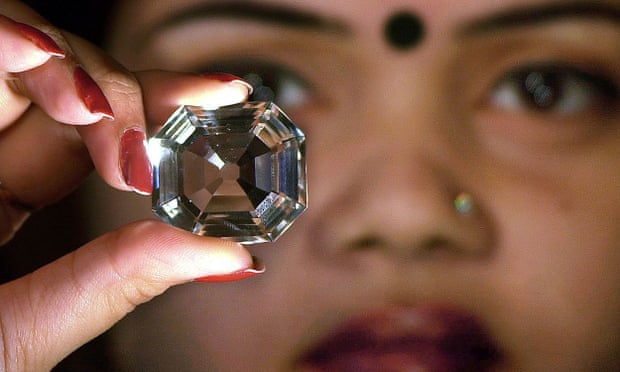- UID
- 20
- Online time
- Hours
- Posts
- Reg time
- 24-8-2017
- Last login
- 1-1-1970
|
Michael Liversidge and Dr Jharna Gourlayrespond to David Olusoga’s suggestion that British museums should send back thousands of objects taken from former colonies.

An Indian model displaying a replica of the Koh-i-Noor diamond. ‘Which country should get Koh-i-Noor diamond from the royal crown – India, Pakistan or Bangladesh? Should it be cut into three pieces so that none of these three countries feel left out?’ asks Dr Jharna Gourlay. Photograph: Deshakalyan Chowdhury/AFP/Getty Images
▼ As someone raised in colonial Africa who has taught art history here for nearly 50 years I agree with David Olusoga that returning the spoils of empire makes a lot of sense ( UK should return looted art to ex-colonies, says historian, 28 May). It need not empty our museums of everything so acquired. As he showed in his recent BBC Civilisations programmes, cultural interchange between Europe and the rest of the world shaped a shared heritage. That needs displaying so its legacies can be appreciated without concealing the uncomfortable historical facts.
Objects from the old empires will still have a place in European museum collections because, more vividly than most postcolonial history books, they bring that past to life. Wherever we and they are physically, with modern digital technologies and the internet they can be recorded, seen and interpreted from anywhere, but still there is no substitute for the originals, especially in countries that have few surviving artefacts from their own past. That is why returning some, while retaining others, would be mutually beneficial educationally, culturally and diplomatically.
Deaccessioning colonial acquisitions from British museums could have other benefits. To ensure that they would be going where they will be cared for to the highest standards, money from the overseas aid budget could be used to invest in museums and professional training, providing opportunities for our own institutions to develop new income streams from heritage management and consultancy services. It could also reimburse at current market values the cost to museums of objects acquired with public or charitable funds. (▪ ▪ ▪)
► Read the full note here: Source |
|